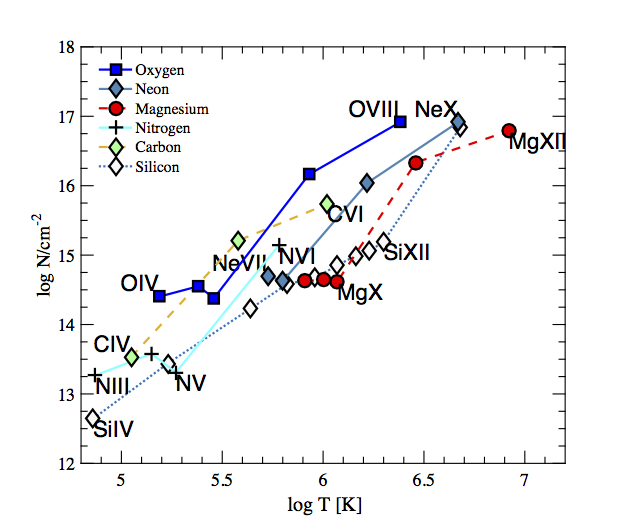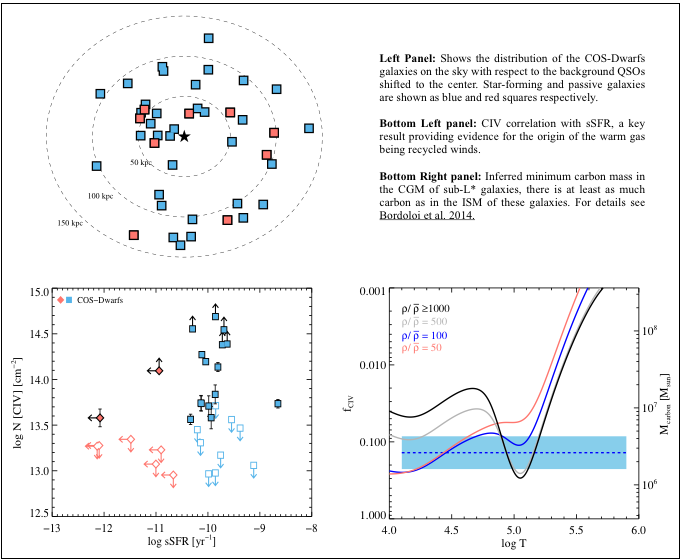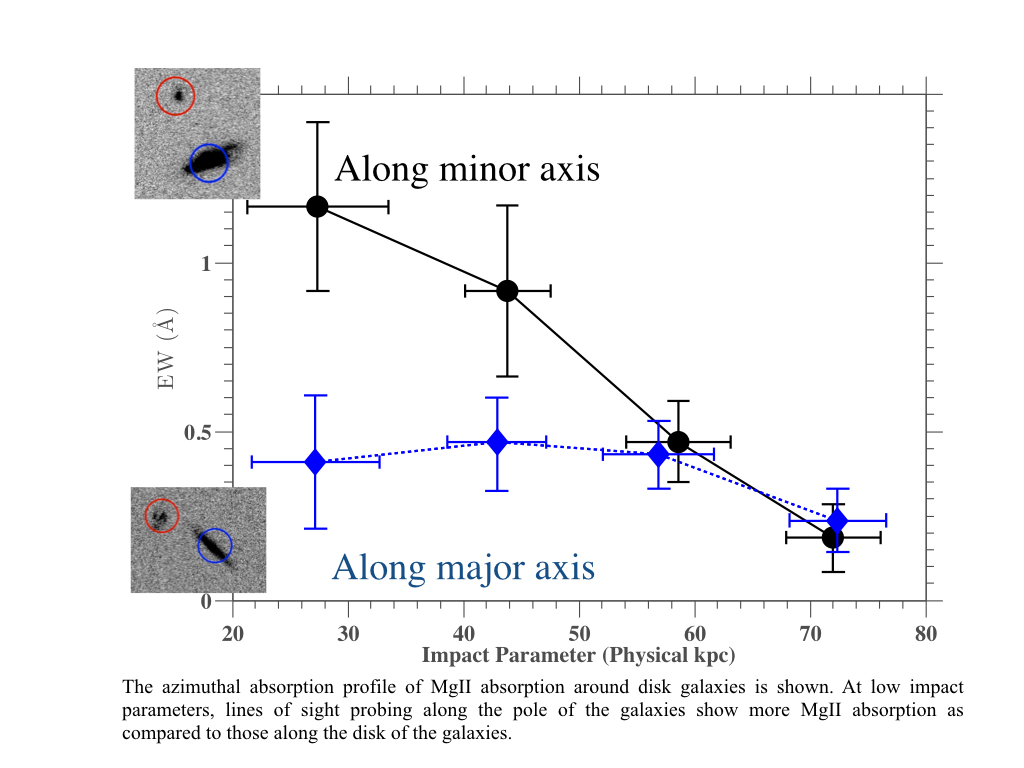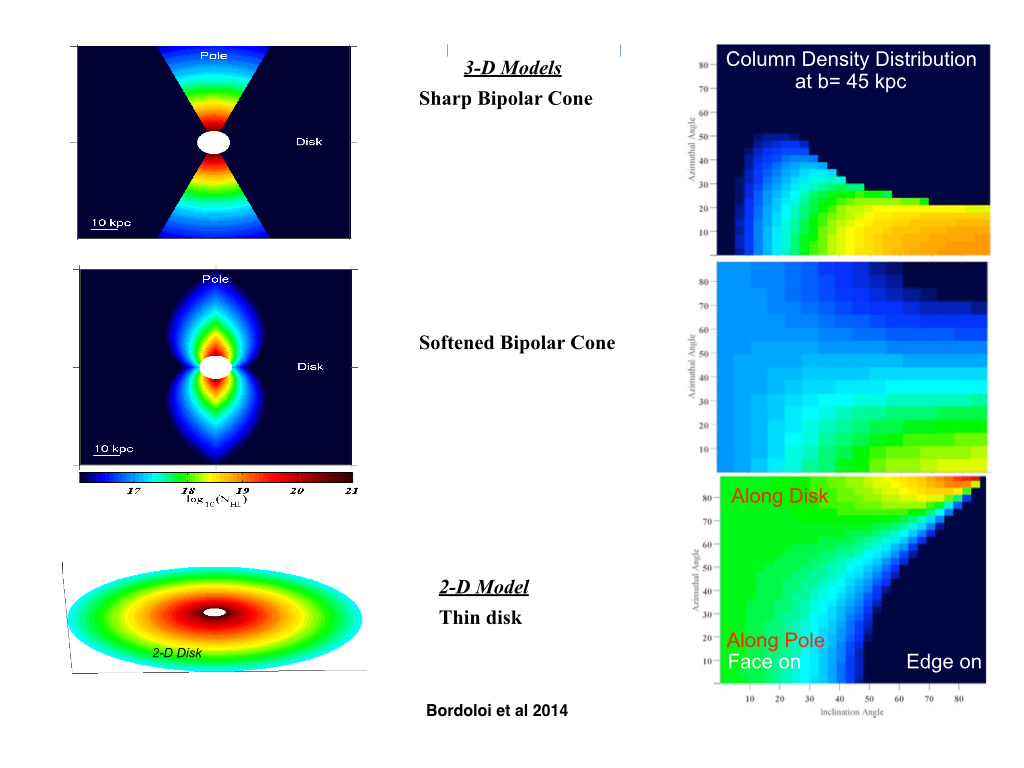The Circumgalactic Medium
The CircumGalactic Medium (CGM), is losely defined as a region spanning a few hundred kiloparsecs from a galaxy that contains an extended reservoir of diffuse gas. Our recent understanding of galaxy evolution has dramatically changed with new understanding of how the circumgalactic medium influences star-formation in galaxies. The CGM is a major reservoir of baryons in a galaxy and is actively regulating galaxy evolution.
I have been actively studying the CGM using both observations and simulations. Observationally, I have been extensively using both the Hubble Space Telescope and ground based large telescopes such as Magellan, VLT, Keck, Gemini to understand how the CGM impacts galaxy evolution.
Some of my recent work on this field are listed below.
The formation and physical origin of highly ionized cooling gas :

We present a physically clear cooling flow theory that explains the origin of warm diffuse gas seen primarily as highly ionized absorption line systems in the spectra of background sources. We predict the observed column densities of several highly ionized transitions such as O VI, O VII, Ne VIII, N V, and Mg X; and present a unified comparison of the model predictions with absorption lines seen in the Milky Way disk, Milky Way halo, starburst galaxies, the circumgalactic medium and the intergalactic medium at low and high redshifts. We show that diffuse gas seen in such diverse environments can be simultaneously explained by a simple model of radiatively cooling gas. We show that most of such absorption line systems are consistent with being collisionally ionized, and estimate the maximum likelihood temperature of the gas in each observation. This model satisfactorily explains why O VI is regularly observed around star-forming low-z L* galaxies, and why N V is rarely seen around the same galaxies. We predict that the typical O VI column densities seen around these galaxies would be an order of magnitude higher than the associated N V column densities. We further present some consequences of this model in quantifying the dynamics of the cooling gas around galaxies and predict the shock velocities associated with such flows. Useful formulae for both observers and simulators are presented. For more information see Bordoloi et al 2017.
COS-Dwarfs survey: The carbon reservoir around sub-L* galaxies :

We report new observations of circumgalactic gas from the COS-Dwarfs survey, a systematic investigation of the gaseous halos around 43 low-mass z < 0.1 galaxies using background QSOs observed with the Cosmic Origins Spectrograph.
From the projected 1D and 2D distribution of CIV absorption, we find that CIV is detected out to ~ 100 kpc (corresponding roughly to ~ 0.5 Rvir) of the host galaxies.
The CIV absorption strength falls off radially as a power law and beyond ~ 0.5 Rvir, no CIV absorption is detected above our sensitivity limit of ~ 50-100 mA.
We find a tentative correlation between detected CIV absorption strength and star formation, paralleling the strong correlation seen in highly ionized oxygen for L ~ L* galaxies by the COS-Halos survey.
The data imply a large carbon reservoir in the CGM of these galaxies, corresponding to a minimum carbon mass > 1.2 Million solar masses, out to 110 kpc.
This mass is comparable to the carbon mass in the ISM and exceeds the carbon mass currently in the stars of these galaxies. The CIV absorption seen around these sub-L* galaxies can account for almost two-thirds of all W > 100 mA CIV absorption detected at low z.
Comparing the CIV covering fraction with hydrodynamical simulations, we find that an energy-driven wind model is consistent with the observations whereas a wind model of constant velocity fails to reproduce the CGM or the galaxy properties.
For details see Bordoloi et al. 2014.

